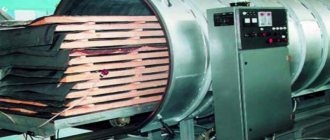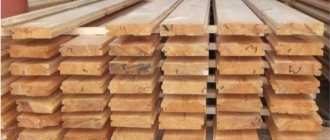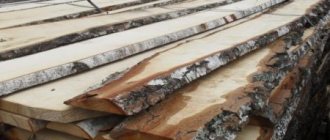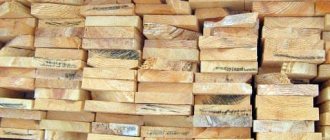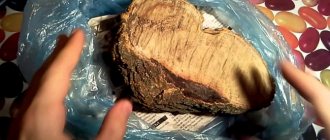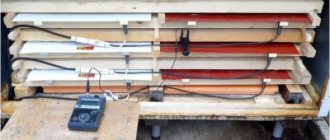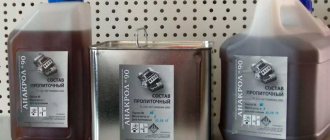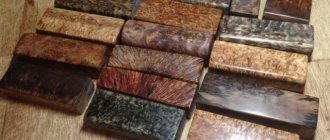Vacuum drying
Vacuum drying is a process of artificially removing moisture from materials. It is produced under conditions of reduced pressure in the working volume. Creating a vacuum causes a decrease in the temperature at which evaporation begins. This feature of a vacuum drying installation leads to a number of advantages over other types of equipment:
- Lack of oxidative processes.
- Safety when working with explosive materials.
- Short processing time.
At the same time, high demands are placed on the equipment. In particular, a vacuum pump for vacuum drying is selected based on the following criteria:
- Duration of the procedure.
- Taking into account the nature of the liquid substance found in the material being processed.
- Accounting for the amount of moisture contained in raw materials.
- Residual amount of liquid in the material.
Based on these parameters, vacuum equipment is manufactured that meets the technical specifications.
What effect does drying provide?
Drying itself, as a process of optimizing the hygroscopic properties, gives the wood relatively high strength indicators. This is already enough for the material to meet the basic requirements of building regulations. But large wood processing plants use the above-described technologies and methods of drying wood only as a preparatory stage for further processing of the material. In particular, for impregnations, which will additionally give the workpieces the qualities of fire resistance, moisture resistance, frost resistance, etc.
Vacuum drying technology
Vacuum drying is used for various materials and has two popular types:
- Vacuum drying of products.
- Vacuum drying of wood.
Vacuum drying technology is different for different types. The principle for all drying is the same: remove moisture from the product. This is done thanks to installed heaters that promote the release of moisture. Pump mechanisms also operate to remove the released liquid from the working chamber.
Application of hydraulic press
It has already been said above that during the drying stages, the structure of the wood softens and becomes pliable. This condition is a side effect and redundant within the drying process. Actually, to eliminate these consequences, the final cooling stage is provided. However, the softened structure of the material can be exposed to a hydraulic press, which will rid the workpiece of physical defects - at least ensure its straightening. Such presses are included in the general complex of capacities at which wood is dried in drying chambers. The pressing technology, in turn, eliminates possible defects that were acquired by the material in the chamber. The final workpiece will be “correctly” deformed with the parameters needed for working lumber.
Read also: How to find damaged wiring in the wall
Vacuum drying chambers
Vacuum drying chambers are a structure consisting of a housing, a working volume and additional vacuum units. The housing can have a variety of shapes, depending on the convenience of loading the material, as well as the installation location of the equipment.
Prices for vacuum chambers for drying wood, pharmaceuticals and food products vary widely. This is due to the technological specifications, dimensions, and performance of the cameras. A vacuum pump is connected to the vacuum chamber, creating the necessary pressure parameters in the working volume. Water ring and oil spool types are used. A special control system automatically turns the pump on and off depending on pressure readings. Inside the equipment there is a liquid heater filled with water or oil that circulates through its pipes.
Vacuum pumps for drying vegetables and fruits
Depending on the type of production and the desired results of the final product, there are different modifications of vacuum drying ovens. If we consider all the structural elements of the drying installation, then its most important part is the vacuum pump, which must exactly meet the necessary parameters and have the required operating algorithm.
The characteristics that a vacuum pump must have for freeze-drying vegetables and fruits are determined by certain key factors, the main of which are: the nature of the moisture evaporated from the product, its volume, the optimal amount of time to complete the procedure, the permissible liquid content at the end of drying. If you know what parameters the product being processed has and will have after drying, you can easily decide on the right choice of vacuum pump and equipment in general.
Vacuum freeze drying
Vacuum freeze drying is the process of removing moisture from freshly frozen material. The process is also used in pharmaceuticals to produce drugs that react to heat. Autoclaves with vacuum drying are used to process medical materials and some instruments.
Vacuum drying of vegetables and fruits is characterized by the following factors:
- Process speed.
- Minimum oxygen level in the installation.
- Low temperature levels. This is due to the creation of a vacuum in which the evaporation process occurs faster.
All indicators determine the preservation of the properties of products, as well as the integrity of their structure. The color, taste, smell, nutritional value and benefits remain virtually unchanged. Also, the raw material does not deform and does not lose biological activity, which is especially important when vacuum drying berries. Vacuum drying of fruits and other products consists of three steps:
- Freezing. Special conditions are created in the freezer. One of the main conditions is the level of water vapor pressure below the triple phase point. The process is carried out until ice forms on the surface of the product.
- First stage of drying. Ice is sublimated. A pressure is provided that is below the limit values for ice vapor. During melting, liquid is released on the surface, which is removed by a condenser. The space in which the ice was located remains unfilled.
- Second stage of drying. Removing the adsorbed substance from the dried layer of raw materials. At this stage, the temperature increases and the steam pressure decreases.
Vacuum drying of vegetables follows the same principle.
Drying, like evaporation, is the process of removing moisture from a material using thermal energy. However, due to the presence of the solid phase, the transition of moisture from the material to the environment occurs during the surface evaporation of moisture and its diffusion from the internal layers to the surface of the material. Thus, drying is a diffusion-desorption process. Due to the presence of a solid phase in the chamber, in which desorption of solvent molecules and their diffusion occurs; The designs of drying apparatuses differ significantly from the designs of evaporators.
Existing drying methods can be divided into two groups. The first group includes drying by contacting wet material with heated air or flue gases. In this case, moisture from the material is carried away by air, which leaves the dryer more saturated with moisture than when entering the dryer.
The operation of the second group of devices is based on the transfer of heat to the material from the heated surface of a plate, coil, housing, etc. Water steam is usually used as a coolant, as well as electricity in the presence of electric heaters or lamps. Heat can be transferred to a material when it comes into contact with a heated surface (transfer by conduction) or by radiation.
Such dryers are characterized by the presence of a vacuum in the drying space. The steam of water or some other solvent released from the dried material enters a special condenser. Air entering the dryer through leaks is pumped out by a vacuum pump.
Drying in a vacuum reduces heat loss from the spent drying agent, allows you to better capture valuable (or aggressive) vapors released from the material, and reduce product losses. However, the use of vacuum complicates the design of the dryer. If the material cannot be dried at high temperatures or is susceptible to oxidation, it is dried in vacuum dryers, since the temperature of the material being dried here is low. Vacuum dryers are used for materials prone to dust formation, as well as explosive ones.
Thanks to the use of vacuum, the drying process when the material comes into contact with a heated surface (plates, coils, etc.) is more intense than at atmospheric pressure, since the moisture content of the air at the same relative humidity increases with decreasing pressure. Moisture is intensively removed in the first period (the period of constant drying rate), when the temperature of the material is close to the saturation temperature of water at a given vacuum. In the second period (the period of decreasing drying rate), the temperature of the material rises, approaching the temperature of the slabs.
Accordingly, the intensity of heat transfer in the second period drops sharply. The temperature of the material may reach an unacceptable value, which makes it necessary to reduce the pressure of the heating steam or, with other heating methods, change the temperature of the heating surfaces. In modern dryers, this is achieved by stepwise heating using so-called vacuum steam. It should be noted that low-temperature exhaust steam or condensate can be used for heating.
An increase in the rate of moisture evaporation in a vacuum dryer can be achieved by increasing the temperature of the coolant used to heat the material. When the coolant temperature increases by 10° C, the drying speed during the period of constant speed increases by approximately 15%. An increase in the evaporation rate can also be achieved by increasing the degree of vacuum, since in this case the temperature difference between the coolant and the material increases.
A vacuum dryer usually consists of a drying chamber, a condenser and a vacuum pump. Depending on the specific conditions, a mixing or surface condenser is used. The required pump performance is selected based on the permissible amount of atmospheric air leakage into the dryer and possible gas release of the product. If the pump performance is related to 1 m2 of the heating surface of the dryer, then it is recommended to take the pump capacity in m3/(h*m2) [at suction pressure] for vacuum cabinets 0.9-1.1, for roller vacuum dryers 3.0-4 .5, for rake vacuum dryers 3.5–8.0.
When using a mixing condenser, it must be taken into account that the pump must also pump out the air released from the cooling water. It should be noted that in a vacuum dryer, foaming of the material is possible, which is a consequence of the rapid release of gases contained in the product. For some products this foaming is not acceptable. The heat consumption in a vacuum dryer is less than in an atmospheric dryer, due to the small amount of exhaust air, as well as a decrease in the latent heat of evaporation at low material temperatures. The disadvantages of dryers are increased metal consumption, the need for careful sealing and special devices for loading and unloading.
Vacuum drying of wood
Vacuum drying of wood occurs in several successive steps:
- The prepared raw materials are loaded into a vacuum chamber to dry the wood. In this case, the material is laid in layers, alternating with aluminum heating plates.
- Parameters are set on the equipment. Each type of wood requires individual temperature and pressure indicators.
- Warming up the material. This is done to prevent possible deformation of the wood. The process occurs at pressure equal to atmospheric pressure.
- Drying. This is carried out after the wood has completely warmed up. Using a vacuum pump, air is pumped out from the working volume. The created pressure ensures the distribution of released moisture from the internal layers of the material over its surface layers. This is due to the lack of additional moisturizers that prevent cracking and damage to the wood. Then the moisture comes to the surface and evaporates, settling on the cooled walls of the chamber in the form of condensation. After this, the excess liquid is pumped out with a pump.
The process of drying wood under vacuum conditions does not require high temperatures; heating is carried out up to 70°C, evaporation begins at the thermometer mark of 40°C.
Wood deformation is eliminated due to pressure on the rubber coating material of the working volume. During pumping, it descends onto the raw material and exerts pressure. This causes drying under pressure. After the wood reaches the required levels of residual moisture, the material cools. The effect of temperature stops, and the pressure is maintained until the raw material cools completely. This cooling method also prevents unwanted deformation of the wood, which is removed from the installation after complete cooling.
You can buy vacuum drying from manufacturers. It is worth noting that the cost of the equipment is quite high.
Drying chamber device
Modern cameras are made in the form of a parallelepiped or cylinder. The output side of the structure is equipped with a lid, through which material loading/unloading operations are carried out. Moreover, the structure of the lid includes a rubber sheet fixed on a metal frame - this solution allows you to create an almost perfect vacuum with increased sealing. Each layer of lumber is lined with heating plates, which are usually made of thermally conductive aluminum alloys. To carry out movements, the plates are equipped with roller mechanisms. The movement of the heaters ensures balanced drying of the wood in the drying chambers. The chamber manufacturing technology also provides for the connection of circuits with circulating water. Boilers with liquid are located separately and provide their own heating. To maintain a stable vacuum, a special pump is placed inside the chamber.
